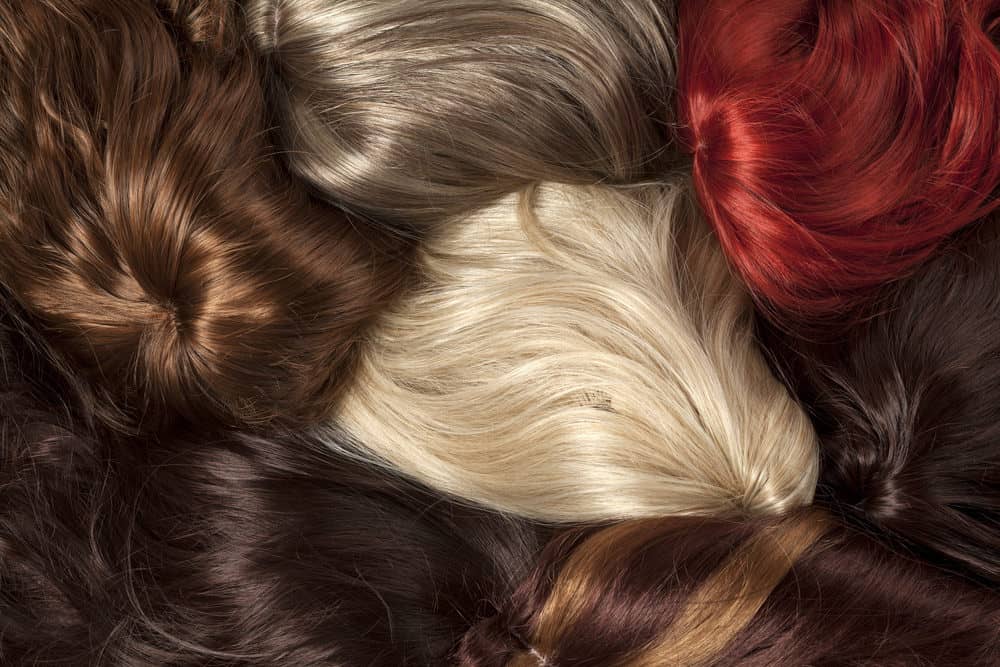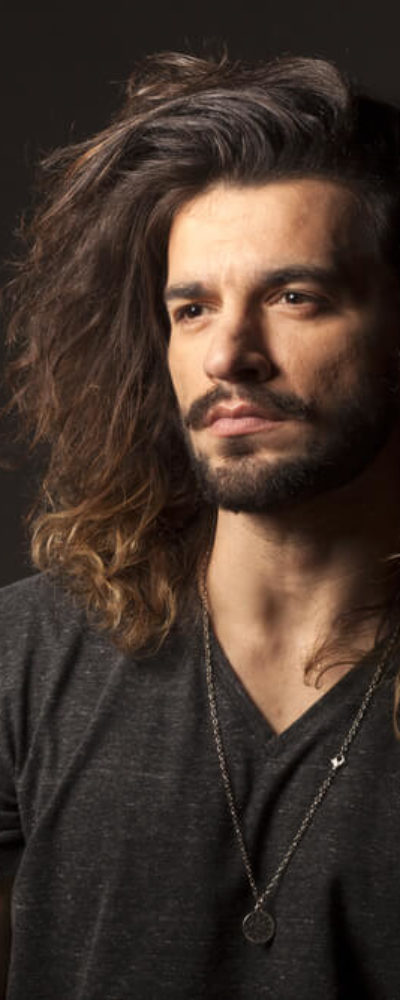
You might think that washing a wig is the same as cleaning your natural hair. After all, hair is hair, isn’t it? But with the variety of wig types available, figuring out how to wash a wig depends on the materials it contains and how you wear and style it. Read on to find out how to clean your wig no matter what type of material it uses.
Related: 8 Wig Alternatives
Types of Wigs
There are multiple categories of wigs, with classification depending on the material and the construction process. You can find hairpieces in endless color combinations, styles, lengths, and thicknesses. Unfortunately, this makes washing your wig difficult unless it comes with a label or other documentation. There are three primary types of wigs, according to hair experts at Hairfax, and each has different handling requirements.
Synthetic Wigs
Synthetic wigs are the least expensive option, and these are hardy compared to human hair. However, if you apply heat to your hair often, a synthetic wig will respond by frizzing. Varying construction methods separate synthetic wigs into three categories:
- Wefted, where machines sew synthetic strands into wefting material, forming a cap
- Mono-top, which uses a mono-filament to allow a wearer’s scalp to show through, resulting in a more natural look when you part your hair
- Hand-tied, with mono-top construction and the rest of the hair on a mesh base, though sometimes hand-tied wigs use wefting as well
Human Hair Wigs
Human hair wigs are often the most natural-looking, and authentic human hair allows wearers to style and treat their hairpieces the same as their natural hair. The tradeoff is a significant increase in cost, but for a mono-top construction wig that appears as if it’s your natural hair is often worth it.
Biolon Wigs
Biolon is a newer material that is synthetic but more accurately mimics real hair strands. It won’t fade the way human hair does, and it’s better at resisting tangles. The hair is lightweight, and the transparent mesh cap lets the scalp show through. Biolon wigs are often the ideal solution for people with permanent hair loss since they look natural but hold up well over time.
Preparing to Wash a Wig
If you have only ever washed your natural hair, you might think washing a wig is as simple a process as how to wash clothes. But handling a wig requires a delicate touch and careful use of products. If you’re not careful, you may permanently damage the wig.
Take note of these tips before you begin washing:
- Handle the cap part of the wig gently. This is where the individual hair strands meet the “scalp” of the wig and handling it carelessly can cause the hair to fall off. Similarly, treating the wig roughly may result in broken hair, especially with natural hair wigs.
- Apply product cautiously. For natural hair wigs, regular shampoo that suits the type of hair on your wig is appropriate. But synthetic wigs require alternative shampoos that treat that kind of synthetic strand. Also, you should avoid conditioner on the roots of your wig to keep from loosening the microscopic knots.
- Don’t brush while hair is wet. On a head of natural hair, brushing or combing while hair is wet can cause breakage. The same is true of wigs, whether they have synthetic or natural strands. Use your fingers to manage any tangles, then dry the wig carefully before brushing.
Following these tips helps you to avoid damage to your wig and minimize the amount of time you spend caring for it.
How to Wash a Wig
Now that you know to take care while handling a wig for washing, we’ll outline the steps for washing a wig whether it’s synthetic, natural, or Biolon construction.
Detangle While Dry
All types of wigs are susceptible to breakage when wet, so your best bet is to detangle before drenching the wig. Use a comb to work through tangles gently, until you can run the comb from the roots to the ends of the wig without snags.
Select Shampoo
Depending on the type of wig you have, you may need to purchase special shampoo. For natural wigs, shampoo that addresses the unique needs of the hair, whether it’s curly, straight, thin, or thick. For synthetic material wigs, using standard shampoo and conditioner won’t do much to clean the plastic-based strands.
Wash Gently
For natural hair wigs, it’s tempting to wash the same way that you would wash hair that stays attached to your scalp. But as wikiHow recommends, the best way to prevent damage and ensure your wig is thoroughly clean is to submerge it in a sink full of water with a couple capfuls of shampoo.
This technique also works for synthetic wigs, too, and soaking your wig in soapy water is much gentler than rubbing it vigorously the way you might do to your scalp. Soaking for five minutes should work for all types of wigs.
Rinse Carefully
After soaking, remove the wig from the basin of water and run fresh water over it. Alternatively, you can submerge the wig in a sink or tub full of clean water. Feel free to swish gently, but don’t squeeze or rub the wig to get the shampoo out.
Once you rinse your natural hair wig, you can apply conditioner to moisturize and soften the hair. Avoid the roots, applying conditioner carefully to the length of the hair. Use the same process for rinsing out conditioner or use a leave-in variety if you prefer.
Dry the Wig
Once you successfully clean the wig, continue to handle it carefully for drying. The ideal place to dry your wig is on a wig stand. Natural hair wigs should dry away from sunlight to prevent discoloration. All types of wigs can air dry, but depending on the style of the hairpiece, you may prefer to blow-dry natural hair. Alternatively, you can blow-dry the cap of the wig first, then wear it to finish drying.
After you’ve washed and dried the wig, you can apply products, brush it, and style it however you like. Just keep in mind that the product you add will need to be washed out, and you should already be washing your wig regularly depending on how often you wear it.



